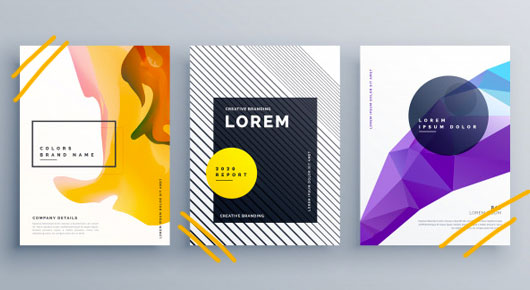15 Marketing automation best practices to drive growth
Small and growing businesses need to squeeze every drop of value out of the technology they use. They typically have limited resources and need to maximize efficiency and productivity, often with a small team of marketers. Or even a single marketer running the entire show. Adhering to marketing automation best practices is the key to growing a business.
Nevertheless, many businesses struggle to generate the maximum ROI from their marketing automation software. According to a survey by Liana Technologies, the most common reason respondents gave for not using marketing automation was the lack of expertise (55.6%) and a lack of human resources to manage the system.
With the right marketing automation (MA) software, these concerns are not a problem. If you opt for a solution that provides in-depth onboarding and training, you can be sure your team will have the expertise to use the system effectively. And with automation completing so many tasks in the background, a single person can manage and coordinate the activities driven by your marketing automation system.
Therefore, driving company and revenue growth using a marketing automation solution shouldn’t be seen as an insurmountable obstacle. If you’re asking yourself, what is marketing automation? How does marketing automation work? Or if you’re not sure how to leverage it to drive growth, this article is for you.
Here we cover 15 marketing automation best practices for growing your business.
1. Map out your lead stages

The primary way marketing automation helps you grow is by generating leads and nurturing them through to conversion, so they become customers. To do so, you need to map out the various stages a lead passes through on its way to qualification and conversion.
You can then create a custom field in your system to track where they are in the sales funnel according to which stage they are in. This helps you see how quickly leads are moving from one stage to the next, allowing you to identify bottlenecks in the funnel and address the cause so leads continue to flow smoothly through the pipeline.
Here are a few common lead stages that many companies use:
- Anonymous: Someone who has been browsing your website and is being tracked in your MA system but has not yet self-identified or provided you with any personal data.
- Known: Someone who has self-identified and is now a target for marketing campaigns.
- Engaged: Someone who has engaged with you—clicking an email, downloading content, etc.—but is not yet qualified (i.e., not ready to pass to sales). You will want to nurture them towards qualification.
- Marketing Qualified Lead (MQL): An MQL is who has been qualified by your lead scoring process and has been passed to sales for outreach.
- Sales Accepted Lead (SAL): Once an MQL is passed to sales, they need to assess the lead and determine whether they are ready for a conversation or not. If so, they are considered to be sales accepted. If not, sales can bounce them back to marketing for further nurturing.
- Sales Qualified Lead (SQL): Once the sales department accepts the lead and follows up with them, they determine whether the lead is interested enough to open an opportunity. If so, an opportunity is created, and the lead is labeled an SQL.
- Won: Sales converts the lead into a customer, and their lead stage is updated to “won.”
- Lost: Sales loses the opportunity, and the lead stage is updated to “lost.” You can store these leads and circle back a few months later to see if there is still any interest.
- Recycled: An MQL or SAL that doesn’t make it to the SQL stage and is sent back to marketing for further nurturing.
- Disqualified: These are people who will likely never buy from you and are not worth marketing to. These include students who complete a lead form for research purposes, competitors who complete lead forms to see what kind of content you are producing, etc.
2. Lead scoring
You need a lead scoring process in place to determine when a lead is marketing qualified and ready to pass to sales. You can score leads based on both demographic attributes (such as job title, industry, level of seniority, etc.) and behavioral actions (such as opening and clicking an email, downloading content, visiting high-value web pages, etc.).
Be sure to include sales in the process, as they will have valuable insight to add regarding which actions and attributes deserve which score.
3. Lead qualification process
Once your lead scoring mechanism is in place, you must determine a lead qualification threshold. In other words, the number of points a lead must accumulate to be considered an MQL and be passed over to sales.
You should revisit the qualification process with sales every quarter at a minimum to ensure the point scale is accurately qualifying leads at the right time. If not, you can adjust the qualification threshold or change the point values that certain attributes or behaviors are worth.
This is one of the most critical of marketing automation best practices.
4. Establish fast-track/automatic qualification
In your scoring and qualification process, you should include a fast track to qualification. Certain actions taken by leads indicate an undeniable propensity to purchase your product or service.
These actions include requesting a demo, signing up for a free account, or anything else that you feel indicates a propensity to buy for your unique business model.
When you set up your scoring model in your marketing automation solution, you can specify that those actions get scored the same number of points that it takes to become marketing qualified. When they take those actions, the system will award that number of points, automatically qualifying them.
5. Set up triggers to streamline lead progression
With the use of system triggers, you can set in motion automated actions when certain events take place. For example, when a lead becomes marketing qualified, you can use system triggers to automatically create a task for sales to follow up, update the lead stage to MQL, pull them out of any ongoing nurture campaigns, and so on. You decide which actions should take place, and when.
Triggers can also be used to initiate actions such as email sends. For example, let’s say you want to automatically send a welcome email to anyone who signs up for a free trial. You can have that email pre-drafted and loaded into the system. Then, use a trigger to automatically send it to the lead once they sign up. Or, you can use a trigger to automatically create a new opportunity when the sales team marks a lead as SQL. The possibilities of what you can automate with triggers are endless.
6. Personalization, segmentation, and targeting

Marketing automation solutions store lots of contact data. But when you use an all-in-one CRM, which includes sales, marketing, and customer support automation on the same platform, you have much more data at your disposal.
Use that data to segment contacts into groups with similar attributes. Leverage it to personalize emails and other messages to your contacts. With so much data available, you can create targeted email marketing campaigns that only go to certain segments and speak to the pain points of that particular segment.
For example, if you want to target white space in the real estate market, you can create a campaign that speaks to the pain points of that industry, using that industry’s lingo. The same campaign wouldn’t be effective if you sent it to leads in the career services industry.
Related Blog: How to master personalization in marketing
7. Leverage email drip campaigns
Email drip campaigns consist of a series of emails that are pre-drafted, loaded into the system, and are sent at specified times, or based on actions taken by leads.
You can use them to welcome new customers, run nurturing campaigns, onboard new clients, remind customers that their renewal date is coming up, and more. The whole process is automated, which saves loads of time and resources. Check out some examples of killer email drip campaigns.
According to Econsultancy, 33% of marketers feel their automated email marketing efforts are not successful. But with an easy to use drag and drop campaign builder, you can quickly set up email drip campaigns that are sure to generate results. This will leave you in the 67% that feel their email marketing process is successful.
8. Send email newsletters

Email newsletters are a great way to keep customers and prospects informed about what’s new and great at your company. It’s a non-invasive, subtle form of marketing because you’re delivering helpful information (hopefully). The process of sending out email newsletters is one of the oldest weapon in the marketing armoury and is considered very important amongst the marketing automation best practices.
They are easy to set up if your marketing automation solution provides email newsletter templates and an intuitive drag and drop email builder. And you can automate the distribution of your newsletter to ensure the message gets to all intended recipients.
Related Blog: 10 Tips to Build an Effective Email Marketing Strategy
9. Run multichannel campaigns
If your marketing automation solution provides a robust feature set, you should be able to run multichannel marketing campaigns. These are campaigns that incorporate touch points through various channels, such as email, social media, SMS text messaging, videos, etc.
Your leads are all unique, and their preferred channel through which to consume information varies. Younger leads likely look to social media more than older leads, who may be more likely to rely on email to stay informed. However, that’s not true across the board.
Every business is unique, and so are its customers and leads. By pushing out information through various channels, you are more likely to reach the maximum number of contacts.
10. Social listening and monitoring
Not all marketing automation solutions provide social listening and monitoring capabilities. But those that do can notify you when someone mentions your brand’s name on social media. This allows marketers to engage with leads and customers right when they are engaging with you.
A robust suite of social CRM features gives you an edge over the competition because social media usage is growing and shows no signs of slowing down. Engaging contacts on social media is more personal than sending an email. You should make efforts to engage on social media whenever possible, and social CRM features allow you to do that.
11. Identify brand advocates
As mentioned above, social listening lets you know when someone mentions your brand on social media. If they are giving you praise, you’ll want to reach out as soon as possible to thank them and start a dialogue. If they are promoting your brand on their own, they are a potential brand advocate.
Engaging with and nurturing your relationship with them on social media encourages them to continue to promote your brand. If they are extremely satisfied with your product or company, you could suggest doing a case study about their experience. If nothing else, cater to them, follow them on social media, and do whatever else you can to keep them happy, so they keep promoting your brand to their social networks.
12. Leverage lead generation tools
Lead generation is a critical part of growing your business. You can use your marketing automation system to streamline your lead generation efforts using built-in lead generation tools.
Most MA systems will provide the ability to create landing pages with lead forms to capture the personal information of new leads. It should be easy to create these assets if your system provides an intuitive drag and drop landing page and form builder.
Be sure that your landing pages and forms are engaging and effective at converting leads. Here are some tips on doing this successfully.
13. Use popups to manage exit intent

Web pop-ups are small message boxes that appear on the screen when you are browsing a website. They are used to offer content, convey important information, provide discounts, and so on (see example below).
If your MA system is equipped with the ability to predict exit intent, you can configure exit intent web pop-ups that appear when the system thinks someone is about to leave the site. It can do this through the use of artificial intelligence and machine learning.
Exit intent pop-ups appear and provide some type of incentive to stay on the site, such as a free trial, a discount code, or anything else that will entice them to stick around.
14. Routinely clean your contact database
If your database starts to accumulate fake contacts or duplicates, it can have negative effects on your ability to reach your leads.
Duplicates appear when someone who is already in your database completes a form with a different email address, name, or another identifier. You can manage this by routinely merging duplicates so that your data stays clean.
Fake contacts enter your database when someone completes a form with a fake email address. If this is the case, your marketing emails will go to an address that doesn’t exist, which will impact your open and click rates. You can avoid this by putting verification measures in place that identify fake emails and phone numbers. When that happens, your form will tell them so and will not let them submit the form unless they enter a valid email address.
15. Measure measure measure
Did I mention how important it is to measure? One of the great things about a marketing automation solution is that it tracks every touch point you have with your contacts.
You can keep track of site and landing page visits, content downloads, the number of MQLs that convert into customers, campaign outcomes, and a lot more.
Also, with powerful email tracking capabilities, you can measure open rates, click-through rates, bounces, unsubscribes, and more. Doing so allows you to keep your finger on the pulse of your results. You can identify which tactics are working, and which ones need improvement.
To grow your business, you need to be able to make data-driven decisions. Marketing automation provides the metrics needed to maintain constant insight into the results of your efforts. This lets you focus on what’s working and form a strategy around how to improve results and drive more revenue growth.
Conclusion
Marketing automation is the engine that drives growth and expansion for small and emerging businesses. When used correctly, you can generate more leads, close more deals, and maintain higher customer satisfaction rates.
Selecting the right MA solution for your needs is important. Many smaller businesses opt for an all-in-one CRM, which includes complete marketing automation on the same platform. Plus, with an all-in-one CRM, small businesses can take advantage of marketing automation software at no extra cost. There are even free solutions available, so cost doesn’t have to be an issue. Just be sure to evaluate your options and select the right all-in-one CRM to meet your needs.
Do you have any additional marketing automation best practices for maximizing the ROI of your MA software? Share them in the comments section below!
4 Comments
Jenna
about 6 years agoIt was interesting to get updates about the best-in-class marketing automation to drive growth. There are many such practices practiced by several marketing automation products; hence Aritic PinPoint is the only one product in the market which meets every update according to every requirement.
ReplyGabriel Swain
about 6 years agoThanks for your opinion, Jenna. I'd love to hear your perspective on why you think Aritic PinPoint is the only solution meeting your needs. Which features are valuable to you in that solution that you are not seeing in others?
ReplyDan
about 5 years agoAn MQL is not ready for sales. An MQL is someone who has engaged with the team's marketing efforts, but are still not ready to receive a sales call. An example of a MQL is a contact who respond to a specific form in a marketing campaign. This is a good time to nurture them with content specific to what they've indicated as their specific challenge. SQLs are contacts who have indicated through their actions that they are ready for a direct sales follow up. An example of a SQL is a contact who submits a question about your product through a contact form.
ReplyGabriel Swain
about 5 years agoHi, thanks for your input and feedback. Ultimately, each business can define their own lead lifecycle stages so there's no universal definition of an MQL. Prominent sites like Siriusdecisions call an MQL a lead that's sales-ready (see here). However, that's their perspective and each business should define their own lifecycle stages according to their business model. So I guess the answer is that there is no objective answer to this question. Rather, each business should make that decision for themselves. What one business calls an MQL will differ from what another business calls an MQL so it's a subjective issue. We didn't intend for the list in this article to be taken as an cold, hard standard, just an example of what some companies use. Thanks for adding your comments--we appreciate your feedback. Best of luck with everything!
Reply